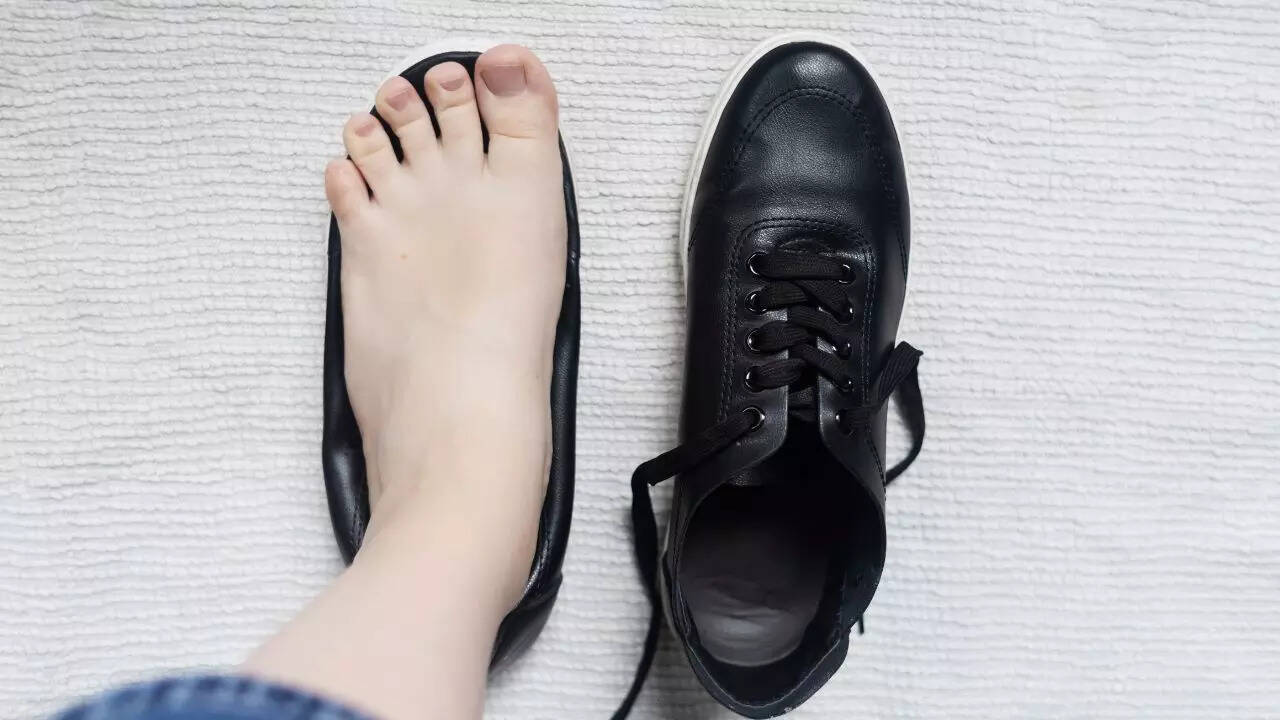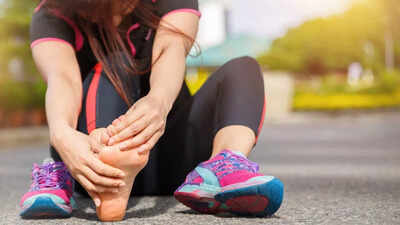Shoes are more than a fashion accessory. In fact, they’re the foundation of the body’s alignment. Considering shoes a mere style statement isn’t enough. The shape of the shoe is essential in the longer run. If shoes don’t match the natural shape of the feet, the center of gravity might shift and put extra stress on joints and muscles.

Shoe shape impacts posture and pain. Credits: Canva
Improper footwear can even cause injuries and deformities like bunions, fractures, sprains, hammertoe and claw toes. When our feet aren’t healthy, our entire body is affected. Contrary to that, the right shoe shape would equal better posture and fewer aches. The good news is, choosing the right shaped footwear isn’t that hard. Here’s a simple guide to check if the shape of the footwear is right for you:

Shoe shape impacts posture and pain. Credits: Canva
A recent study conducted on running shoes with raised or toe boxes found that altered toe box design helps prevent toe injuries.Research shows that narrow toe boxes increase forefoot pressure and can lead to chronic foot pain. Narrow shoes raise the risk of bunions and hammertoes and on the other hand, round toes can prevent these risks. What you should look for are shoes that provide enough room to wiggle your toes and let them spread naturally. Studies have linked high heel use to increased lumbar lordosis, a type of spinal curve, and reduced postural stability. High heels can tilt the pelvis and strain the lower back. This doesn’t mean completely flat shoes are the right choice, as they can overstretch the Achilles tendon. The right footwear to look for is low to moderate heel height with a stable base.

Shoe shape impacts posture and pain. Credits: Canva
- Cushioning and Sole Stability
Cushioning refers to the materials of the midsole of a shoe. The midsole is designed to absorb shock during activities like running or walking. Research indicates that the type, density and structure of midsole materials affects shock absorption.Choosing the appropriate cushioning can depend upon the type of physical activity you’re planning to do. For Runners, heavily cushioned shoes may reduce impact forces, potentially lowering injury risk. Whereas for walkers, shoes with moderate cushioning can provide comfort without compromising stability.

Shoe shape impacts posture and pain. Credits: Canva
Flexibility simply means how easily a shoe bends. This bending allows natural foot movement during activities, particularly at the ball of the foot. Research shows, especially for runners, flexible shoes allow greater range of motion, thus enhancing efficiency.When selecting footwear, it is essential to consider both fit and flexibility. The shoe should hug the midfoot and heel without squeezing it.

Shoe shape impacts posture and pain. Credits: Canva
For the right footwear, toe box, heel height, cushioning, sole stability, fit, and flexibility are important factors in maintaining proper posture, reducing pain, and preventing injuries. By paying attention to these factors and selecting shoes suited to the activities and foot shape, one can enhance comfort and prevent long term issues.


